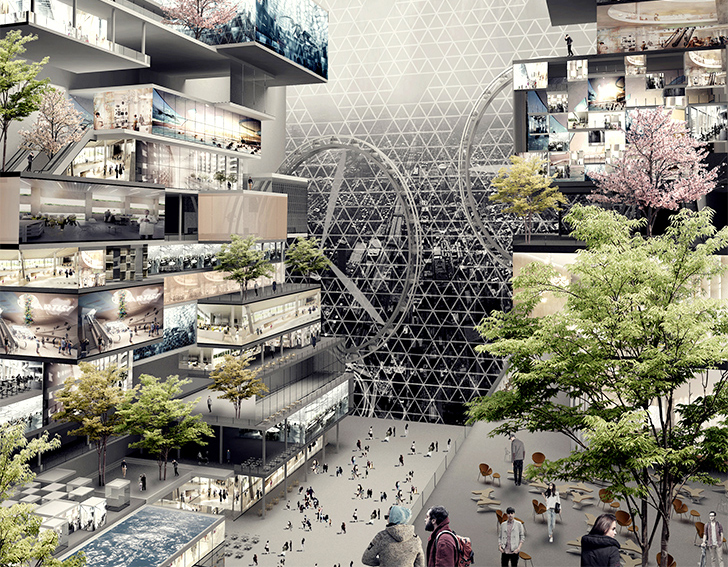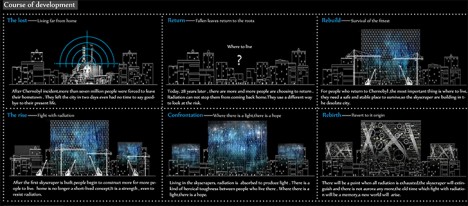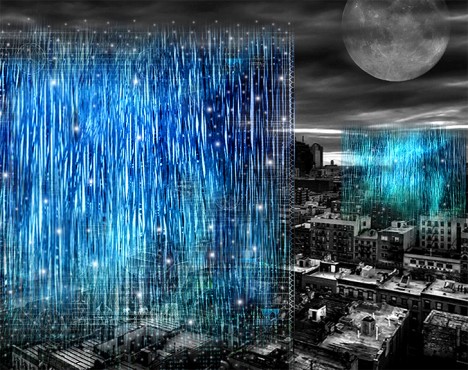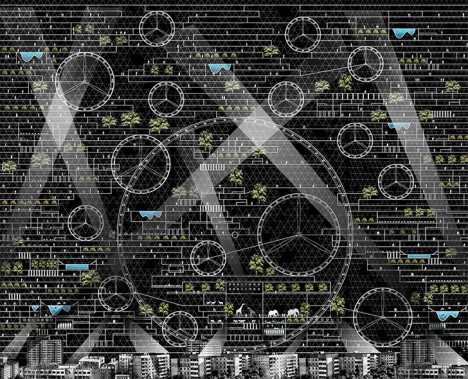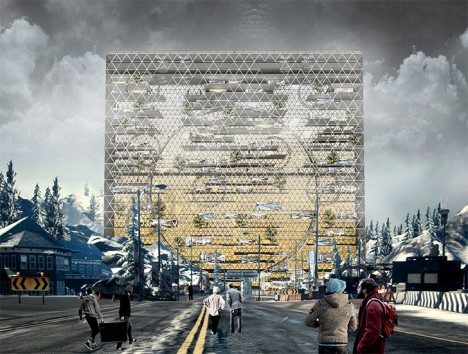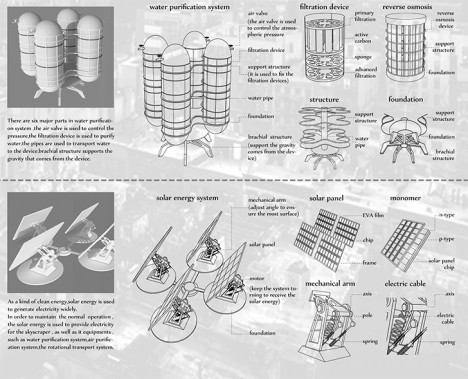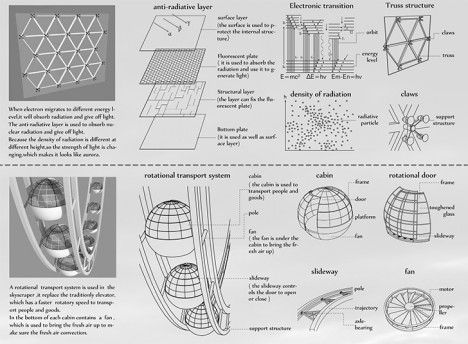Despite warnings about dangerous radiation many families have already taken up residence around Ukraine’s famous failed nuclear reactor. This skyscraper acknowledges that trend, and would help enable settlers to make their moves in somewhat safer conditions. The skin of the building provides more than just shelter, glowing like a grounded aurora as it captures and processes radiation – all in the midst of an ongoing project to cap and contain further fallout.
Designed by Zhang Zehua, Song Qiang and Liu Yameng, Unexpected Aurora filters air and water, harvests solar energy, and creates a kind of self-contained oasis that would allow people to resettle the wastelands around Pripyat with less exposure to harm. Their design won them an honorable mention in the 2015 eVolo Skyscraper Competition.
Protocol for many irradiated sites is simply a bit of soil coverage (as little as a few feet) and conversion to a park (as opposed to homes), the idea being: a bit of exposure here and there is not too harmful, though living right on top of contaminated areas could be. Many parks in San Francisco, for instance, were built on sites once used as test beds for hosing down irradiated ships. These vessels were intentionally placed close to oceanic nuclear tests to see if they could subsequently be cleaned. As the government learned, you cannot wash away the radiation, but trying to do so does cause some to leak into the surrounding ground. Of course, the situation in and around Pripyat is significantly more severe than secondary runoff.
The creators set the scene: “With a big bang, the fourth reactor of the Chernobyl nuclear power plant exploded, the amount of radiation is about 400 times of the atomic bomb which was dropped on Hiroshima. About seven million people were forced to leave their homeland in two days, they had no time to say goodbye to their present life.”
They also acknowledge the aftermath: “But not everyone accepts the arrangement of fate. The negative effects of radiation have been dafeated by a large group of settlers, more and more people are returning to their homeland which located in the restricted area, what can be sure is that they use a different way to look at the risk which they bear.”
There is no perfect solution for a complex problem like this, and the concept is unlikely ever to be realized, but at least this approach recognizes the reality on the ground and attempts to bridge the gap between an imperfect present and hopeful future. Meanwhile, the idea of a self-contained city is nothing new, and what would be learned from building one could even have applications for things like space settlements.
